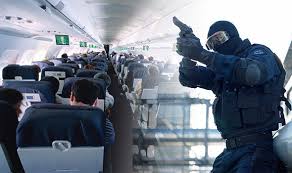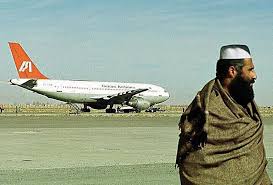Aircraft Hijacking: History, Impact, and Response 
Aircraft hijacking, a term that evokes fear and controversy, refers to the unlawful seizure of an aircraft by individuals or groups with the intent of using the plane as a bargaining tool, a weapon, or a symbol of protest. The act of hijacking has had a profound impact on international aviation, shaping the development of air security, laws, and global cooperation. The history of aircraft hijacking is marked by dramatic events, from early hijackings for political purposes to modern instances involving terrorism. This extensive exploration will discuss the evolution of aircraft hijacking, its major incidents, and the countermeasures developed in response.
The Origins of Aircraft Hijacking: 1930s–1950s
Though the phenomenon of hijacking came to global prominence in the 1960s, the seeds of modern aircraft hijacking were sown as early as the 1930s, when commercial aviation began to expand. In the early years of air travel, hijacking was not as frequent or organized as it would become in later decades, but isolated incidents began to emerge.
The first known hijacking of a commercial flight occurred on February 21, 1931, when a passenger aboard a United Airlines flight from New York to Chicago attempted to seize control of the aircraft. However, hijacking as a criminal act was not yet common. The term “hijack” itself came from 1920s American gangland slang, meaning to steal a vehicle or goods. It was not until later that the term would be fully associated with air travel.
The 1950s marked a period of heightened political tensions, particularly during the Cold War. In this era, hijacking began to be used as a tool for political leverage, particularly by dissident groups in the context of international disputes.
The Surge in Hijackings: 1960s–1970s
The 1960s witnessed the most dramatic surge in aircraft hijackings. This was largely due to the social, political, and ideological upheavals of the time, with numerous groups around the world engaging in hijackings to draw attention to their causes. During this period, the term “hijacking” became firmly entrenched in the global lexicon.
The 1960s saw a spike in hijackings, with numerous cases of individuals hijacking planes to defect to the West or to protest against oppressive regimes. For example, in 1961, a plane was hijacked by two men from the Soviet Union, who sought asylum in the United States. This was part of a broader trend of hijacking as a form of escape from political oppression.
However, it was in the 1970s that hijacking became a regular tactic of terrorist groups and political activists. Groups such as the Palestine Liberation Organization (PLO) and Basque separatists frequently hijacked aircraft to make political statements or negotiate for the release of prisoners. The hijacking of El Al Flight 426 by the Popular Front for the Liberation of Palestine in 1968 became a notorious case that signaled the political nature of hijacking.
One of the most significant events of the 1970s occurred on September 5, 1970, when members of the Popular Front for the Liberation of Palestine (PFLP) hijacked multiple airliners. The hijackers coordinated their actions and took control of planes from different airlines, ultimately leading to the famous Dawson’s Field hijackings in Jordan. The hijackers held the planes and their passengers hostage, demanding the release of Palestinian prisoners. Eventually, after negotiations, the hijackers released the planes, and the passengers were freed. This event underscored the extent to which hijacking had become a powerful tool in global political struggles.
The 1970s also saw the rise of hijacking as a form of terrorism. September 5, 1972, saw the Munich Olympics massacre, where members of the Black September Organization took Israeli athletes hostage, highlighting the increasingly violent nature of hijackings and terrorism. Though this was not a hijacking of an aircraft, it was part of the same wave of politically motivated violence and targeted attacks on civilians.
The Heightened Crisis: 1980s–1990s
By the 1980s, hijackings were a recognized global problem, with heightened security measures in place. The hijacking of TWA Flight 847 in 1985 by Hezbollah militants marked a turning point in hijacking tactics. The hijackers demanded the release of prisoners held in Israel, and the incident culminated in the murder of a US Navy diver, Robert Stethem, whose body was later thrown out of the plane.
During the 1980s, hijackers started to increasingly target aircraft as a means to disrupt the operations of governments, and aircraft were used in the Middle East to exert political pressure. Many of these hijackings took place in the context of the Israeli-Palestinian conflict and broader Middle Eastern geopolitics.
The hijacking of Pan Am Flight 103 in 1988, in which a bomb exploded over Lockerbie, Scotland, killing 270 people, was one of the most devastating and high-profile incidents of this era. While this event was a bombing rather than a traditional hijacking, it illustrated the evolving threat to civilian aviation and led to an international outcry for tighter security measures.
By the 1990s, hijacking had become rarer, primarily due to the improved security measures implemented in response to previous incidents. But hijackings did not disappear. In 1996, the hijacking of Air France Flight 8969 involved the involvement of the Armed Islamic Group (GIA), an Algerian terrorist organization. The hijackers sought to fly to France to conduct a bombing campaign, but French special forces intervened, saving the hostages.
The Rise of Suicide Hijackings: September 11, 2001
The hijacking of American Airlines Flight 11, United Airlines Flight 175, American Airlines Flight 77, and United Airlines Flight 93 on September 11, 2001, forever altered the global landscape of aviation security. On that fateful day, 19 al-Qaeda terrorists hijacked four commercial airliners. Two of the planes were flown into the Twin Towers of the World Trade Center in New York City, one into the Pentagon in Washington, D.C., and the fourth, United Airlines Flight 93, crashed into a field in Pennsylvania after passengers attempted to regain control of the plane.
The September 11 attacks, often referred to as 9/11, represented a new, terrifying chapter in hijacking history. The hijackers were not interested in political negotiation or seeking asylum, but in using the planes as weapons of mass destruction, killing thousands and forever changing the nature of global conflict. This event caused the deaths of nearly 3,000 people and led to a dramatic shift in the international approach to aviation security.
Global Response to Hijacking Threats
In the wake of 9/11, aviation security became a primary concern for governments worldwide. The U.S. government passed the Aviation and Transportation Security Act in 2001, which created the Transportation Security Administration (TSA). The TSA was tasked with implementing stricter security procedures at airports, including heightened screening of passengers and baggage, reinforced cockpit doors, and the introduction of air marshals on flights.
The International Civil Aviation Organization (ICAO), a United Nations agency, worked with countries to develop international protocols to combat hijacking. This included the implementation of more sophisticated technologies for passenger screening and the introduction of more stringent regulations regarding the handling of dangerous items on flights. Airport security worldwide was overhauled to prevent hijacking attempts, and aviation became one of the most highly regulated industries in the world.
Modern-Day Hijackings and the Continued Threat
While hijackings have become much rarer in the post-9/11 era, there have been several high-profile cases that have kept aviation security in the global spotlight. One of the most significant events of the 21st century was the hijacking of Malaysia Airlines Flight 370 (MH370) in 2014. The aircraft disappeared during a flight from Kuala Lumpur to Beijing, and its fate remains one of the greatest mysteries in aviation history. The incident raised questions about the security of flight tracking systems and has led to increased efforts to monitor aircraft in real-time.
In recent years, hijackings have been rare but not unheard of. Terrorist groups such as ISIS and al-Qaeda have occasionally attempted to hijack planes, but the success rate has been low due to improved security. In 2016, a hijacking of a Libyan domestic flight occurred when a man attempted to divert the flight to Malta, demanding political asylum.
The Future of Aviation Security
The threat of hijacking remains an ever-present concern in modern aviation. While the traditional form of hijacking—where passengers or crew are held hostage for political or financial demands—has decreased, the possibility of aircraft being used as weapons or tools of terror continues to be a key area of concern for global authorities. Enhanced screening technologies, biometric identification, and advanced surveillance systems are being developed to mitigate these risks further.
The ongoing challenge for aviation security is balancing the need for safety with the need for efficiency and convenience in air travel. As global air travel continues to grow, so too will the threats against it, and the evolving tactics of hijackers will require constant adaptation from authorities.
Conclusion
Aircraft hijacking has evolved from a rare occurrence in the early days of aviation to a global issue with far-reaching consequences. From its early days as a form of political protest to its terrifying use as a weapon of terror on 9/11, hijacking has reshaped the way we think about aviation security. While modern hijacking attempts have become much rarer, the threat remains an ongoing concern for governments, airlines, and passengers alike. The history of hijacking demonstrates both the vulnerability and the resilience of international aviation, as well as the need for continual innovation in security to safeguard the skies.
